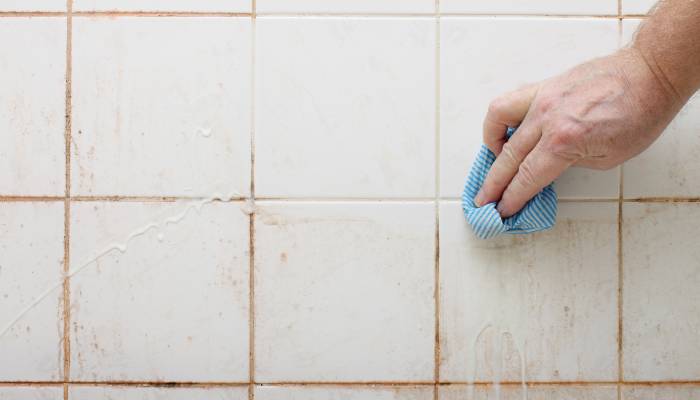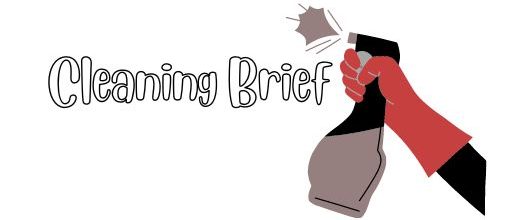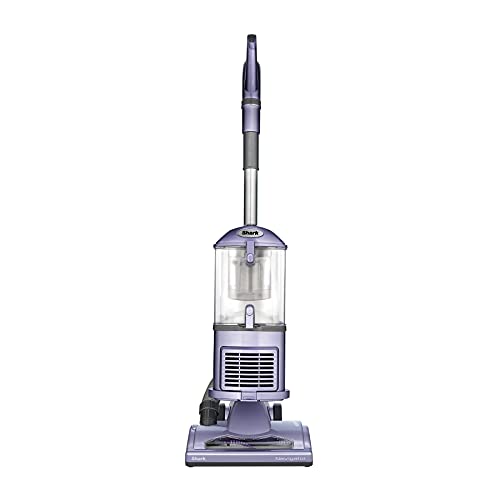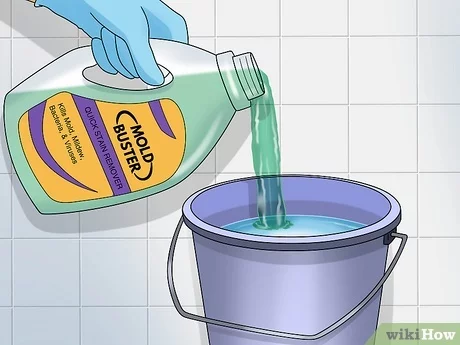How to Clean Mold from Shower Grout: Effective Techniques Revealed
To clean mold from shower grout, make a mixture of equal parts water and vinegar, apply it to the affected areas, scrub with a brush, and rinse thoroughly with water. Mold can be a common and stubborn problem in showers, especially in the grout between tiles.
If left untreated, it can cause health issues and damage to your bathroom. Luckily, there are simple and effective solutions to get rid of mold from shower grout. By using a mixture of water and vinegar, you can easily remove the mold and prevent it from coming back.
We will discuss how to clean mold from shower grout step by step, ensuring a clean and healthy showering experience. So, let’s get started and say goodbye to that pesky mold!

Credit: www.certifiedcleancare.com
Identifying Mold In Shower Grout
Keeping your bathroom clean is important for maintaining a healthy living environment, and one area that often requires attention is the shower grout. Mold is a common problem in showers due to the warm and humid conditions, making the grout a perfect breeding ground. Identifying the presence of mold in your shower grout early on can help you take necessary measures to prevent its spread and keep your bathroom fresh and mold-free. In this section, we will discuss some common signs of mold growth in shower grout as well as the health risks associated with it.
Common Signs Of Mold Growth
Mold growth can be easily identified in shower grout if you know what to look for. Here are some common signs that indicate the presence of mold:
- Dark or black patches on the grout lines
- Discoloration of the grout, such as green, gray, or brown spots
- An unpleasant musty odor in the bathroom
- In some cases, you may also notice a fuzzy or slimy texture on the grout.
If you come across any of these signs, it is important to take immediate action to prevent the mold from spreading further and causing more damage.
Health Risks Associated With Mold
Mold in shower grout not only poses a threat to the appearance and cleanliness of your bathroom but also poses health risks to you and your family. Here are some potential health risks associated with mold:
- Allergic reactions: Mold spores can trigger allergic reactions in sensitive individuals. Symptoms may include sneezing, coughing, itchy eyes, and skin rashes.
- Asthma attacks: Mold can worsen asthma symptoms, leading to wheezing, shortness of breath, and chest tightness.
- Respiratory infections: Prolonged exposure to mold can weaken the immune system and increase the risk of respiratory infections.
- Irritation of the skin, eyes, and throat: Contact with mold can cause irritation and discomfort in these areas.
It is crucial to address any mold issues in your shower grout promptly to protect your health and the well-being of your loved ones.

Credit: www.the-sun.com
Preventive Measures For Managing Mold Growth
To effectively manage mold growth in shower grout, take preventive measures such as regular cleaning, proper ventilation, and using mold-resistant products. Cleaning mold from shower grout requires a mixture of water and white vinegar or hydrogen peroxide, scrubbing with a brush, and thorough rinsing.
Regular maintenance can help prevent mold growth and maintain a clean, healthy environment.
Mold growth in shower grout can be a persistent problem, but with the right preventive measures, you can keep it at bay. By incorporating regular cleaning regimens and effective ventilation practices into your routine, you can maintain a mold-free shower environment. Read on to learn more about these essential preventive measures.
Regular Cleaning Regimen
Maintaining a regular cleaning regimen is crucial for preventing mold growth in shower grout. By following these simple steps, you can ensure that your shower remains clean and mold-free:
- Start by gathering the necessary materials, such as a cleaning solution, scrub brush, and gloves.
- Mix the cleaning solution according to the instructions and apply it to the grout lines.
- Allow the solution to sit for a few minutes to loosen any mold or mildew.
- Using a scrub brush, gently scrub the grout lines in a circular motion to remove any mold or mildew.
- Rinse the grout thoroughly with water to remove any remaining cleaning solution.
- Dry the grout completely using a soft cloth or towel to prevent moisture accumulation.
- Repeat this process on a regular basis to prevent mold from returning.
Effective Ventilation Practices
Inadequate ventilation can contribute to mold growth in shower grout. Proper ventilation helps to reduce moisture levels in the bathroom, making it less hospitable for mold to thrive. Consider implementing these effective ventilation practices to keep mold at bay:
- Open the bathroom window or use an exhaust fan during and after showering to remove excess moisture.
- Ensure that your exhaust fan is functioning properly and clean it regularly to prevent blockages.
- Wipe down the shower walls and grout after each use to remove any residual moisture.
- Avoid leaving wet towels or bath mats in the bathroom, as they can trap moisture and contribute to mold growth.
- If possible, leave the bathroom door open to allow air circulation and promote drying.
Bearing in mind these preventive measures and incorporating them into your cleaning routine can go a long way in maintaining a mold-free shower grout. By preventing mold growth before it becomes a major problem, you can keep your shower clean, healthy, and inviting.
Tools And Supplies For Mold Removal
Mold removal from shower grout requires specific tools and supplies to effectively eliminate the problem. Using the right equipment and cleaning products not only makes the task easier but also ensures a thorough and long-lasting result. Utilizing the recommended items for mold removal and safety equipment is essential for a successful cleaning process.
Recommended Cleaning Products
When cleaning mold from shower grout, it’s crucial to use effective and safe cleaning products. Here are some recommended cleaning items for mold removal:
- Bleach-based cleaner: It effectively kills mold and removes stains from grout.
- Vinegar: Natural and non-toxic, vinegar is an excellent alternative for mold removal.
- Baking soda: Acts as a gentle abrasive for scrubbing and deodorizing the grout.
- Hydrogen peroxide: Effective for killing mold and preventing regrowth.
Safety Equipment For Mold Removal
Ensuring personal safety during mold removal is paramount. The use of appropriate safety equipment can protect you from harmful mold spores and cleaning agents. Here are some essential items for staying safe while removing mold from shower grout:
- Protective gloves: Prevent direct contact with mold and cleaning solutions.
- Respirator or face mask: Shields your respiratory system from inhaling mold spores and chemicals.
- Goggles: Protects your eyes from exposure to mold spores and cleaning products.
- Disposable coveralls: Helps prevent mold spores from sticking to your clothes and skin.
Techniques For Removing Mold From Shower Grout
Cleaning mold from shower grout is essential to maintain a hygienic bathroom environment. Mold not only looks unpleasant, but it can also be harmful to your health. To effectively remove mold from shower grout, you can utilize natural remedies or follow a step-by-step chemical cleaning process. In this blog post, we will explore both methods, giving you the knowledge and confidence to restore the cleanliness of your shower.
Natural Remedies For Mold Removal
If you prefer a more natural approach to mold removal, several remedies can effectively eliminate mold from your shower grout. These remedies have the advantage of being chemical-free and safe for both your health and the environment.
- Vinegar: Its acidic nature makes it a powerful mold-fighter. Mix equal parts of white vinegar and water in a spray bottle, then spray the solution onto the moldy grout. Let it sit for 15 minutes before scrubbing with a brush and rinsing with water.
- Hydrogen peroxide: Another natural remedy is hydrogen peroxide. Simply pour some hydrogen peroxide onto the affected areas and allow it to sit for 10 minutes. Afterward, scrub the grout with a brush and rinse with water.
- Baking soda and water paste: Create a thick paste by mixing baking soda with water. Apply the paste onto the moldy grout, ensuring full coverage. Let it sit for 15 minutes, then scrub and rinse with water.
- Tea tree oil: Loaded with antifungal properties, tea tree oil is effective against mold. Mix one teaspoon of tea tree oil with one cup of water in a spray bottle. Spray the solution onto the moldy grout, leave it for a few hours, then scrub and rinse.
Step-by-step Chemical Cleaning Process
A thorough chemical cleaning process can provide a fast and efficient solution for removing mold from your shower grout. Follow these steps for effective mold removal:
- Choose a mold-removing cleaner suitable for grout. Ensure the cleaner is specifically designed to eliminate mold.
- Wear protective gloves and a face mask to avoid direct contact with the chemical cleaner.
- Apply the cleaner to the moldy grout, following the instructions provided on the product label.
- Let the cleaner sit on the grout for the recommended duration, allowing it to penetrate the mold.
- Scrub the grout with a brush to dislodge the mold and remove any remaining residue.
- Rinse the grout thoroughly with water to remove the cleaner and any loosened mold particles.
- Dry the grout completely to prevent future mold growth. Use a clean cloth to remove excess moisture.
By following these techniques for removing mold from shower grout, you can effectively eliminate mold and keep your bathroom clean and healthy. Whether you choose natural remedies or a chemical cleaning process, regular maintenance will help prevent mold from reoccurring in the future. Remember to always prioritize your safety by wearing protective gear and ventilating the bathroom during the cleaning process.
Maintenance Tips To Prevent Future Mold Growth
Prevent future mold growth in your shower grout with these helpful maintenance tips. Learn how to effectively clean mold and keep your bathroom mold-free.
Post-cleaning Grout Sealing
Once you have successfully cleaned the mold from your shower grout, it is crucial to take preventive measures to keep it mold-free for as long as possible. One effective method is to apply a grout sealer that creates a protective barrier on the surface of the grout. This barrier helps to prevent moisture and mold from penetrating the grout, keeping it cleaner for longer.
When choosing a grout sealer, look for a product specifically designed for mold and mildew prevention. These sealers often contain anti-fungal properties that inhibit the growth of mold and mildew on the grout. Follow the manufacturer’s instructions carefully when applying the sealer, ensuring proper coverage of all grout lines.
Ongoing Grout Maintenance Practices
In addition to applying a grout sealer, implementing ongoing maintenance practices can significantly reduce the risk of mold growth:
- Keep the shower area well-ventilated by running an exhaust fan or opening a window to reduce moisture accumulation. This will discourage mold spores from settling and thriving in the grout.
- Wipe down the shower walls and grout lines after each use using a squeegee or towel. This helps to remove excess moisture that can promote mold growth.
- Regularly inspect the grout lines for any signs of mold or mildew and promptly address any issues. Catching and treating mold early can prevent further spread and damage.
- Reapply grout sealer every 6 to 12 months or as recommended by the manufacturer. Over time, the protective barrier can wear off, and resealing ensures continued resistance to mold and mildew.
- Avoid using harsh chemical cleaners on the grout as they can degrade the sealer and make it less effective. Instead, opt for mild, natural cleaners or commercially available products specifically formulated for grout cleaning.
Implementing these ongoing grout maintenance practices will help to create an environment that is less conducive to mold growth, ensuring a cleaner and healthier shower experience for you and your family.

Credit: www.fortador-usa.com
Frequently Asked Questions For How To Clean Mold From Shower Grout
How Do I Remove Mold From Shower Grout?
To remove mold from shower grout, mix equal parts of vinegar and water in a spray bottle. Spray the solution onto the affected area and let it sit for 10-15 minutes. Scrub the grout with a brush, rinse with water, and dry the area thoroughly.
Repeat if necessary.
Why Does Mold Grow On Shower Grout?
Mold grows on shower grout due to the presence of moisture, warm temperatures, and organic matter. The constant exposure to water in the shower provides an ideal environment for mold to thrive and grow. Regular cleaning and proper ventilation can help prevent mold growth.
Can Vinegar Kill Mold On Shower Grout?
Yes, vinegar can effectively kill mold on shower grout. Its acidic nature helps break down the mold and inhibit its growth. Dilute vinegar with water, spray it onto the moldy grout, and let it sit for a while before scrubbing and rinsing.
This natural method is safe and environmentally friendly.
Conclusion
To sum up, regular maintenance is key to preventing mold in shower grout. Remember to use natural cleaning solutions and a gentle scrubbing brush. Keep the area well-ventilated and dry to inhibit mold growth. Follow these tips and enjoy a clean, mold-free shower for a refreshing start to your day.




